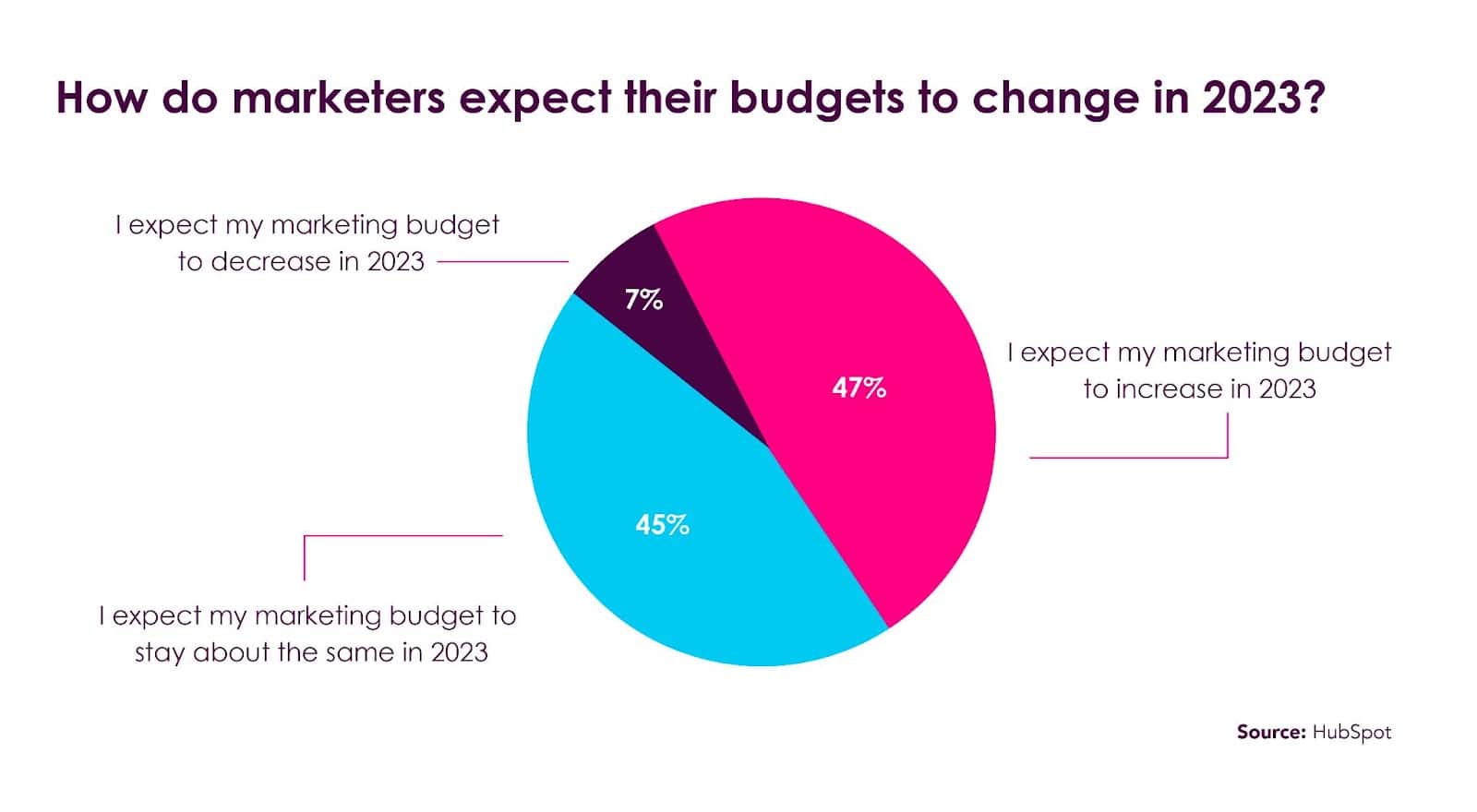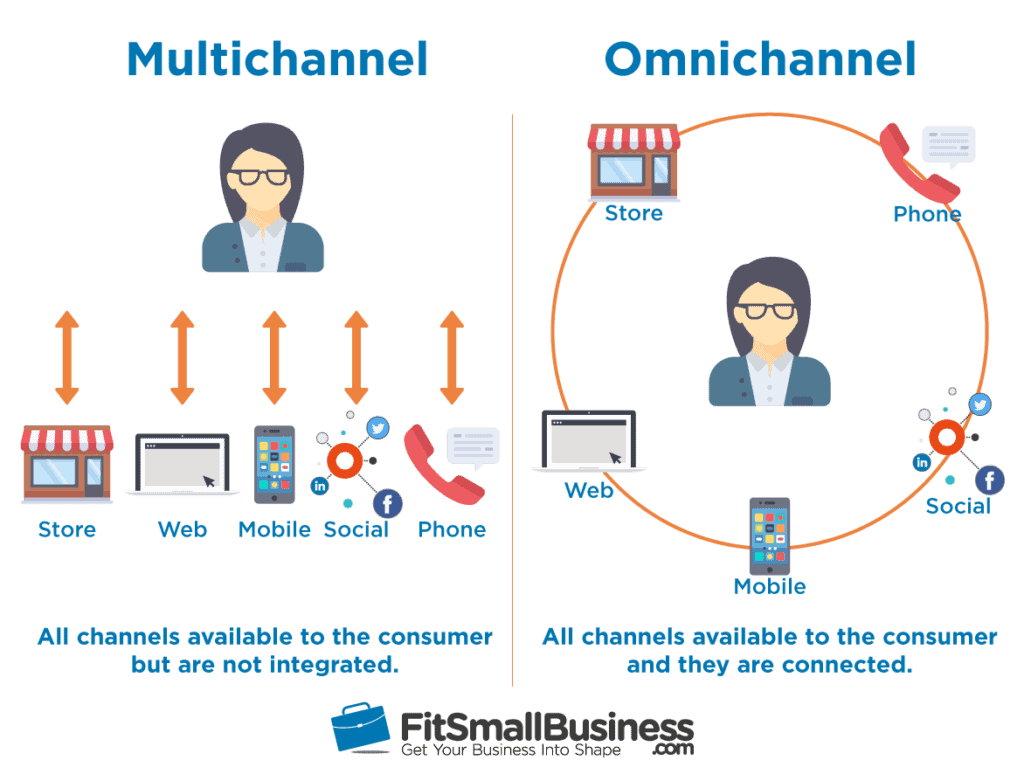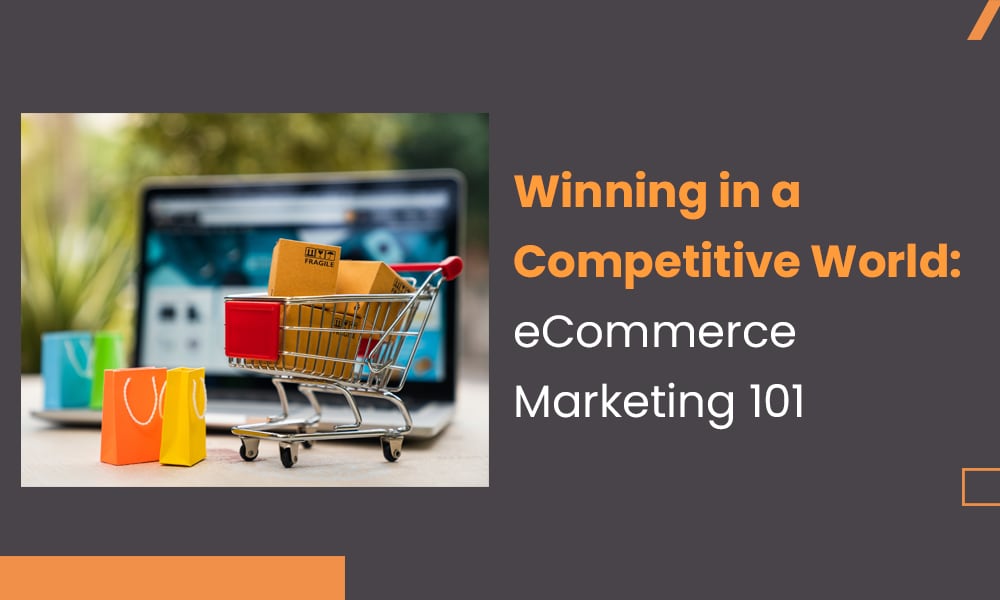You can’t imagine last-minute holiday shopping without eCommerce sites these days, can you? Its convenience is simply unmatched, with 63% of online purchases happening on mobile devices. Since the pandemic, eCommerce has been on an unstoppable growth trajectory. If you’re looking to get into eCommerce yourself, there’s no better time than this.
However, be warned: eCommerce is very competitive, and getting traffic to your store won’t be easy. Unless you’re spot-on with your eCommerce marketing, that is. It can take a few hits and misses to get right. The key is to keep testing and optimizing.
To speed you along your path to eCommerce success, we’ve put together a comprehensive guide on how to build a solid funnel using various types of eCommerce marketing. We’ll also discuss how you can use eCommerce marketing automation to reach your best customers and win them over.
Ready to get started? Let’s go.
Table of Contents
What is eCommerce Marketing?
In a nutshell, eCommerce marketing attracts buyers to your online store – notice we didn’t say website. This is because an eCommerce store is much more than your average website. eCommerce stores let shoppers browse products, compare prices, add them to their cart, and check out.
But first, you must ensure it comes up when shoppers search for the kind of products you sell. eCommerce marketing uses strategies like product pages, price comparison tools, paid ads, drip emails, and push notifications to attract, engage, and convert.
That’s not all. eCommerce marketing keeps the conversation going even after the first purchase. It pushes contextual recommendations for related products into order confirmation emails and shipping alerts. This can open up upsell and cross-sell opportunities if you play your cards right.
Add elements like email newsletters and how-to articles to the mix, and you have a compelling value proposition – one that customers will find hard to resist.
Are Digital Marketing and eCommerce Marketing the Same Thing?
Wait a minute! Aren’t eCommerce strategies also used in digital marketing? eCommerce marketing is a subset of digital marketing. It may share some of the same objectives as digital marketing, like brand awareness and customer education. But they have their differences.
eCommerce marketing strategies focus a lot more on sales and revenue generation. Think about it. As customers search for more options – last-minute shoppers, for example – eCommerce marketing targets them with relevant offers on the right channels to drive growth.
On the other hand, digital marketing is more about building relationships and nurturing. Selling is not the primary objective.
A quick look at the KPIs of digital and eCommerce marketing and the difference between the two becomes clear. While digital marketing KPIs are more broad-based, eCommerce KPIs prioritize revenue and attribution. Before we look at the KPIs in some detail, let’s consider why eCommerce marketing is worth investing in.
Read also: Advanced B2B eCommerce Strategies to Drive Growth in 2024
What Are the Benefits of eCommerce Marketing?
From social commerce to voice search, the eCommerce landscape is changing fast, and so are customer expectations. eCommerce marketing allows marketers to address customer needs and create new growth opportunities proactively. It delivers the following benefits.
1. Effective targeting
Targeting niche audiences – people with unmet needs – based on demographics and interests is a key growth area for brands. eCommerce marketing uses data to track shopping activity, identify intent, and personalize messages to suit different needs. This drives engagement and conversion.
2. Greater flexibility
Unlike traditional advertising, eCommerce campaigns can be adapted or changed rapidly based on real-time performance. You can better respond to changing customer expectations, increasing the chances of conversion.

3. Cost saving
Many eCommerce marketing channels like email and social are free, while the cost of paid ads depends on their results. This makes them much cheaper than, say, billboards or TV advertising.
4. Interactive tech
If the popularity of influencer marketing or voice search is anything to go by, eCommerce marketing has a greater pull factor than traditional advertising. As an eCommerce marketer, you have more options in your toolkit to attract and engage shoppers.
5. Measurable results
Whether you sell on eCommerce marketplaces or your store, you can track metrics and KPIs in real time to optimize campaigns. This saves time and money when trying out new eCommerce marketing ideas.
Read also: How AI is Revolutionizing eCommerce Email Marketing
Setting Goals for eCommerce Marketing
A Key Performance Indicator (KPI) is a quantifiable measure of performance. In the context of eCommerce marketing, a goal-based approach helps you align resources and activities to drive growth. Here are some of the top eCommerce marketing KPIs.
1. Conversion rate
This measures the number of visitors that performed a desired action on your site. This might include signing up for a newsletter, purchasing a product, etc.
Conversion rate = (Number of conversions/number of visitors) X 100
2. Average order value
This metric tells you how much a customer spends on average every time they make a purchase.
Average order value = total revenue/number of orders
3. Customer acquisition cost
This is how much you spend on advertising to acquire a new customer. It tells you how effective your marketing campaign has been.
Customer acquisition cost = Total marketing and sales costs/number of new customers acquired
4. Customer lifetime value
It’s the total revenue potential of a given customer across their journey with your brand.
Customer Lifetime Value = (Average Order Value) X (Average Purchase Frequency) X (Average Customer Lifespan)
5. Cart abandonment rate
This measures the percentage of transactions where customers didn’t complete their check-out.
Cart Abandonment Rate = (Number of abandoned carts/number of carts created) X 100
6. Return on investment
It measures the total revenue generated relative to the marketing costs.
ROI= (Net Profit/Marketing Costs) X 100
Read also: eCommerce Metrics Made Easy: How to Measure Success and Drive Growth
What are the Key eCommerce Marketing Channels in 2023?
Here are some of the top-performing eCommerce marketing channels.
1. eCommerce marketing on social media
72.5% of Americans were active on social media in early 2023. So, it’s the place to be for eCommerce brands. They typically share product updates, special offers, infographics, or videos to advertise their products. You can also run contests or brand hashtags.
But there’s nothing quite like User Generated Content to get conversations started. Facebook, YouTube, Instagram, TikTok, and Snapchat are popular with eCommerce marketers.
2. Online store optimization
Your eCommerce store is your digital storefront, so make sure it’s designed and written to impress. That includes a prominent search bar, product reviews, FAQs, exchange and return policy, etc., for each product category.
Don’t forget to optimize the checkout page with multiple payment options, order tracking, and customer support features.
3. Content marketing for eCommerce
From product descriptions and FAQ pages, content marketing makes the world of eCommerce go around. Shoppers will likely be from different time zones, particularly on eCommerce platforms.
So, brands rely on blogs, lookbooks, buyer guides, videos, and PDF brochures to give buyers a feel of the product. These can be used to educate, convince, and convert customers throughout their journey.
4. eCommerce affiliate marketing
As the name suggests, affiliate marketing uses a network of partners to promote your products for a commission. Payout is usually based on performance. This makes it quite cost-effective for brands while giving them more reach.
Read also: The Ultimate Guide to Selling Digital Goods Online
5. eCommerce email marketing
Think email marketing is losing its edge in the age of live chat and spam blockers? According to Litmus, eCommerce email marketing brings in an ROI of $45 for every $1 spent.
Through the customer journey, eCommerce brands use different types of emails – welcome emails, abandoned cart emails, product recommendations, order confirmation, shipping emails, cross-sells and up-sells, and so on.
6. Product pages
A product page is the eCommerce equivalent of a landing page. It puts the spotlight on specific products. Shoppers clicking on a display ad or product recommendation are usually redirected to product pages.
The focus is on good visuals, pricing information, features and benefits, customer reviews, and FAQs. You can also provide add-to-cart buttons, related product recommendations, and customer support links on-page.
Read also: The Advantages and Disadvantages of eCommerce
7. eCommerce influencer marketing
Influencer marketing lets brands promote their products to the followers of celebrities or subject matter experts. These audiences are usually highly engaged and trust the influencer. Influencers come in all shapes and sizes – from micro-influencers (>100,000 followers) to mega-influencers (<10,000,000 followers).
They usually get paid in cash or receive a share of the sale revenues. Some may also settle for free branded merchandise, depending on the brand they’re working with.

8. eCommerce SEO marketing
Search Engine Optimization increases the visibility of your website in search engine rankings. It includes on-page SEO and off-page SEO. On-page SEO optimizes the content, structure, headers, links, and other aspects to achieve this. Off-page SEO includes techniques to drive more traffic and improve brand authority.
Search engine algorithms for Google, Yahoo, and Bing are always changing, so eCommerce brands must optimize continuously for a smooth user experience.
9. eCommerce video marketing
About 26.4% of working-age internet users watch product review videos. This makes video marketing the perfect medium for eCommerce brands to deliver interactive shopping experiences. Shoppable videos and live streams are two great examples of this.
Read also: How to Conduct eCommerce Market Research in 2024
10. eCommerce performance marketing
PPC advertising uses paid ads to drive traffic to your store and increase conversion. Google Ads, Facebook ads, and Amazon ads are some examples of PPC advertising. There are several PPC tools you can use for creating targeted ad campaigns, product listings, data collection processes, PPC data analysis etc.
They come with market research, competitor intelligence, and data analytics to help you plan and execute paid ad campaigns.
11. Loyalty and rewards programs
eCommerce brands like Amazon credit a lot of their growth to loyalty and rewards programs. These programs are aimed at driving repeat purchases and customer retention. Points-based programs, tier-based programs, and cashback programs are some of the most common eCommerce loyalty and rewards programs.
12. SMS marketing
SMS marketing is using SMS or text messages to customers’ mobile phones. It’s been proven to have much better open rates than email marketing. eCommerce brands use SMS marketing to spread the word about offers and discounts, send order confirmations, product recommendations, loyalty program alerts, or collect customer feedback.
13. Live chat
eCommerce brands can now answer customer queries while they’re on the checkout page, thanks to live chat. This can help overcome the nagging problem of cart abandonment. If you have a small team, chatbots can be the perfect solution.
Read also: eCommerce Email Marketing Simplified: 15 Examples + Tips
How Does the eCommerce Marketing Funnel Work?
The eCommerce marketing funnel visualizes the typical ‘journey’ of an online shopper from first visit to checkout. It helps marketers understand what channels customers use and what they need and identify how best to educate, inform, and convert them.
The typical eCommerce funnel has four main stages – awareness, consideration, purchase, and post-purchase.
Let’s take a look at the different funnel stages in detail.
1. Awareness
Since the prospect is visiting your website for the first time, they may or may not know what products you’re selling. At this stage, the goal is to introduce your brand with helpful content like informative blogs, landing pages, social media, etc.
The key channels eCommerce brands use here are pay-per-click ads, SEO, content marketing, and social media marketing.
2. Consideration
By now, the prospect is keenly comparing one or more product pages, reading how-to content, subscribing to email newsletters, or free trials to decide if they should buy. Discovery turns into purposeful evaluation.
Marketers focus on calculators, product descriptions, case studies, webinars or consultations, price comparisons, feature reviews, etc. The goal is to appeal to the prospects buying motives and move them toward a sale.
3. Purchase
At this stage, the prospect has decided to buy one or more products. They add items to their shopping cart and enter check-out. But not everyone goes on to confirm their purchase. This is the stage where you’d see carts getting abandoned.
Brands use special offers and product recommendations to incentivize purchases. Those that do complete checkout go to the post-purchase stage.
4. Post-purchase
The post-purchase stage sees the focus shift once again to nurturing. For example, how-to content, upsell offers, loyalty programs, etc. The goal is to help customers get the most out of their purchases and drive repeat sales. Leverage customer reviews, testimonials, and user-generated content to attract more traffic.
Read also: 10 Examples of Email Marketing Strategies That Work
Can eCommerce Marketing Automation Optimize Funnel Performance?
The short answer is yes. Marketing automation tools provide ready-to-use workflows, templates, and user guides to help you cater to every touch point and funnel stage. If you face any of the following challenges, marketing automation can help solve them.
1. Lead capture
Using spreadsheets to track and organize leads is time-consuming. Instead, use automated lead capture forms across websites, social media, email, and other channels. EngageBay’s smart lead forms feed all your lead data into one database.
2. Automated emails
Generic emails can affect how customers perceive your brand. Marketing automation can personalize them by mentioning their name, reward balance, birthdays and anniversaries, etc. Moreover, it can do this at scale across welcome emails, order confirmations, delivery tracking, order status updates, etc.
EngageBay’s email templates and drag-and-drop editor make it easy to create personalized layouts and copy variations for different campaigns.
3. Segmentation
Online shoppers don’t appreciate irrelevant offers. You can use marketing automation to segment new prospects by pages visited, session time, and demographics into custom audiences. You can then target them with personalized offers on social media and other channels.
4. Push notifications
Most first-time visitors to your eCommerce store or app aren’t ready to make a purchase right away. You can use trigger-based push notifications to stay top-of-mind.
For example, adding items to a wish list. EngageBay lets you add push notifications to web forms and landing pages to shorten the sales cycle.
5. Re-targeting abandoned purchases
Why limit yourself to email when you can re-target abandoned carts in many different ways? Marketing automation allows you to create multi-channel retargeting campaigns via email, social media, paid ads, dynamic content, and pop-up forms to drive conversions.
6. Loyalty and reward program notifications
Marketing automation makes it easy for you to manage reward programs. It can track loyalty points and allocate rewards based on pre-defined rules. It can show notifications across your brand’s mobile app, email, website, loyalty portals, social media, etc.
7. Re-engagement campaigns
If you want to revive disengaged subscribers on your list, marketing automation can help. Based on your segmentation rules, it can run targeted win-back campaigns and phase out subscribers who don’t respond.
8. Reporting and analytics
Perhaps the biggest difference eCommerce marketing automation can make is providing tactical insights. This helps you measure performance, set clear goals, and run campaigns that drive growth.
Read also: 19 eCommerce Best Practices to Win Customer Confidence in 2023
What are Some Proven Marketing Automation Tools for eCommerce?
If you’re a beginner, these five tools can be a great foundation for your eCommerce marketing automation stack.
1. Klaviyo
Klaviyo is an email and SMS marketing tool designed especially for eCommerce. It offers customizable email templates, an advanced form builder, and advanced targeting, among other features.
2. Omnisend
Omnisend is another dedicated eCommerce email marketing tool with automated workflows and one-click integration with Shopify, WooCommerce, and other platforms.
3. HubSpot
Hubspot Marketing Hub’s lead management, segmentation, email marketing, and other features can be customized to the needs of small and large eCommerce businesses. It’s only one part of a larger ecosystem of business apps that allows you to scale with flexibility.
4. EngageBay
EngageBay is an all-in-one marketing, sales, and customer support platform. Its comprehensive features include automated forms, landing page builder, email templates, lead tracking, and A/B testing, backed by advanced reports and analytics. EngageBay is competitively priced for all the capabilities it offers.
5. Drip
Drip’s email automation and CRM allow eCommerce brands to segment users and deliver the right message at the right time to the right individual.
Read also: 25 Top eCommerce Marketing Tools Sure to Boost Sales in 2023
Conclusion
Adding new tools to your eCommerce marketing automation stack can be expensive and bring diminishing returns over time. Choose a unified, all-in-one solution that integrates marketing, sales, and customer support in one place. Try EngageBay today!
Contact us for more information, or sign up for free.
